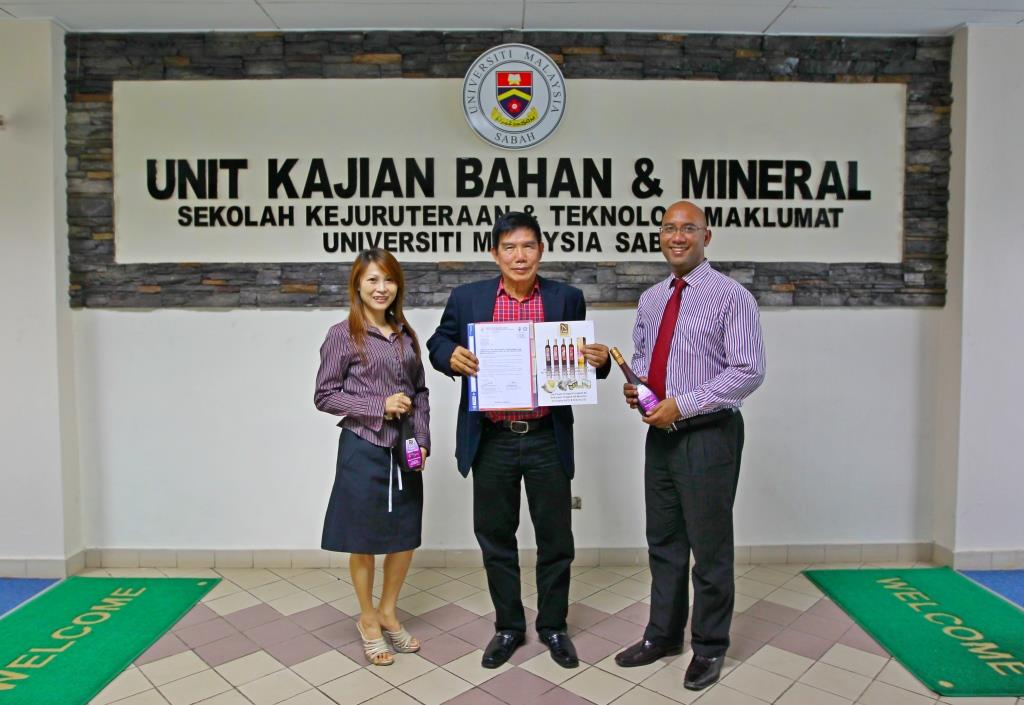 THURSDAY, 26 DECEMBER – Materials and Minerals Research Unit, School of Engineering and Information Technology (SKTM), Universiti Malaysia Sabah (UMS) researchers confirmed that local herbs and spices, especially those from Sabah contained many health benefits.
THURSDAY, 26 DECEMBER – Materials and Minerals Research Unit, School of Engineering and Information Technology (SKTM), Universiti Malaysia Sabah (UMS) researchers confirmed that local herbs and spices, especially those from Sabah contained many health benefits.The study was conducted by UMS researchers consisting of SKTM Phytochemical Process Researchers, Dr. Wong Nyet Kui and Dr. Sivakumar Kumaresan in collaboration with Pop Nzyme Sdn. Bhd. researchers on 10 products developed by the company using local herbs and spices from Sabah.
Among the local herbs and spices used in the products were Oak galls, Eurycoma longifolia, cinnamon, Ganoderma and ginger. Pop Nzyme Sdn. Bhd. owner, Edward Leong had developed these products using grapes enzyme as the main ingredient. The research team had also conducted an antioxidant, anti-microbial and cytotoxicity of the products developed.
The study found that all the products had high level of antioxidants, which was above the level of inhibition of 80% even with low concentrations. Products with high levels of antioxidants can promote anti-aging process and had been linked to an increase in the body’s immune system.
In addition, one of Pop Nzyme products, POP P2 which contained extracts of Oak galls, showed a high level of antioxidants and also strong anti-microbial properties. This means that POP P2 was able to protect the body in the event of infection. In addition, two products of POP P2 contained Oak galls and PE10, which contained Eurycoma longifolia, producing a moderate cytotoxicity, which showed some anti-cancer effects.
The company is currently developing more products from local herbs and spices found in Sabah because it was found that they were safe and effective. Through the collaborative study, UMS research team had successfully helped Pop Nzyme Sdn. Bhd. in identifying the specialty of the products produced, and will continue in their efforts to help local herbs and spices producers following the success of this research.
Source: Dr. Sivakumar Kumaresan , SKTM
Media Division
Chancellery Department